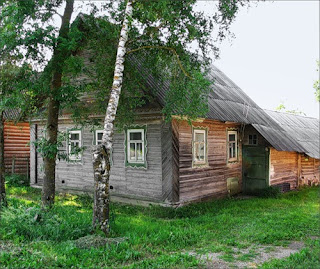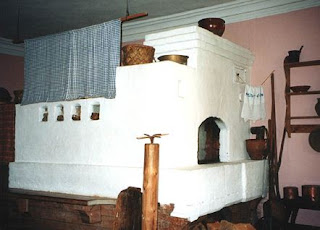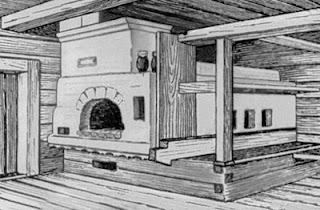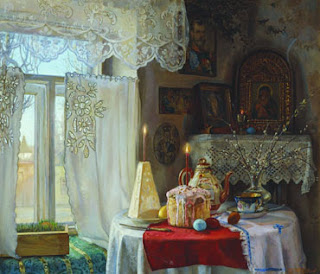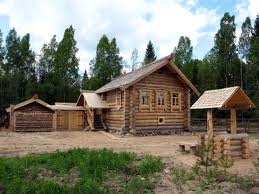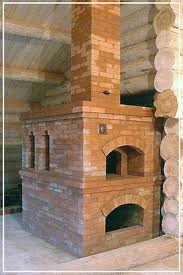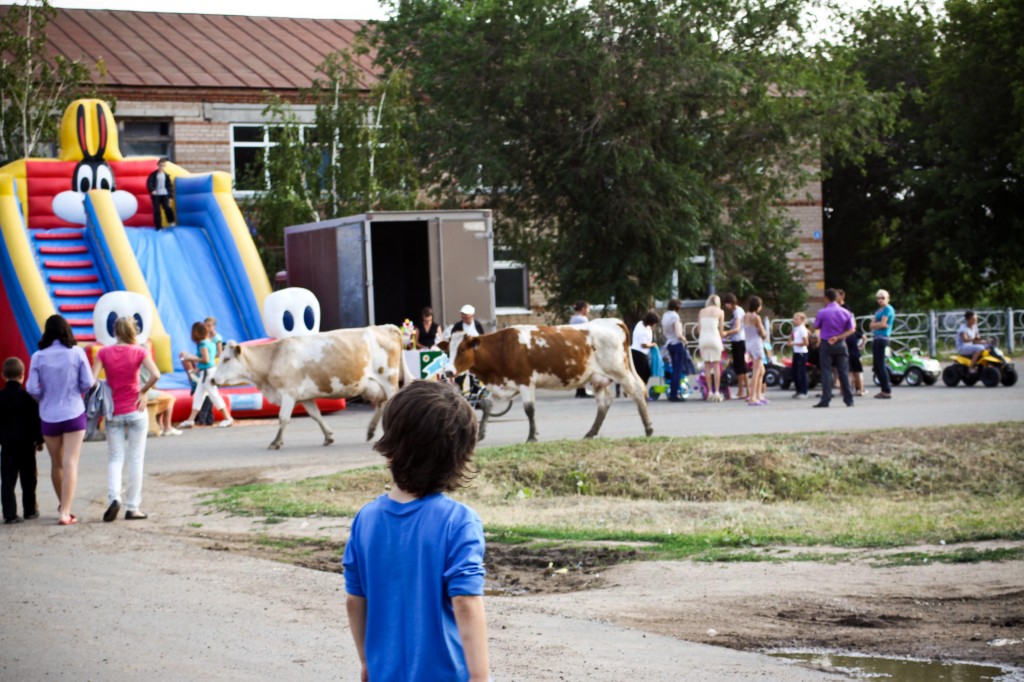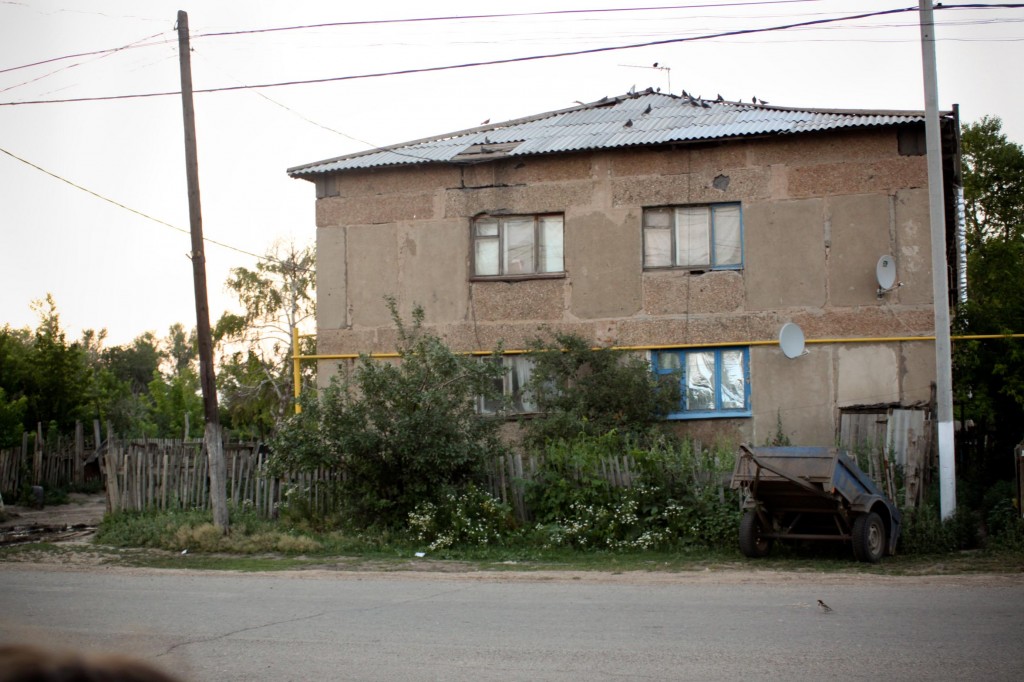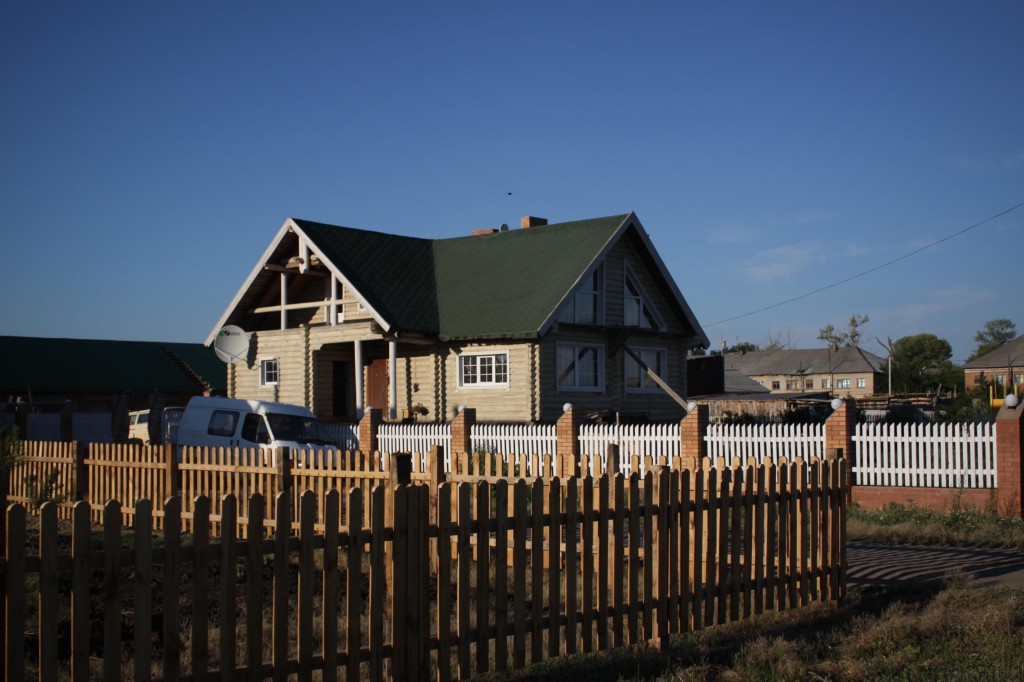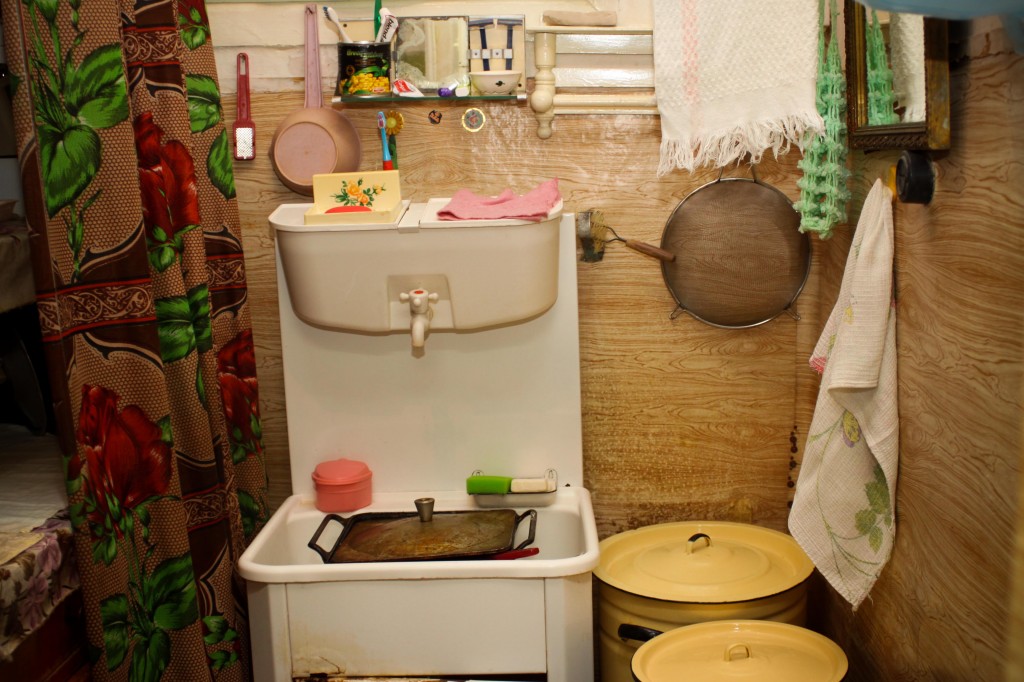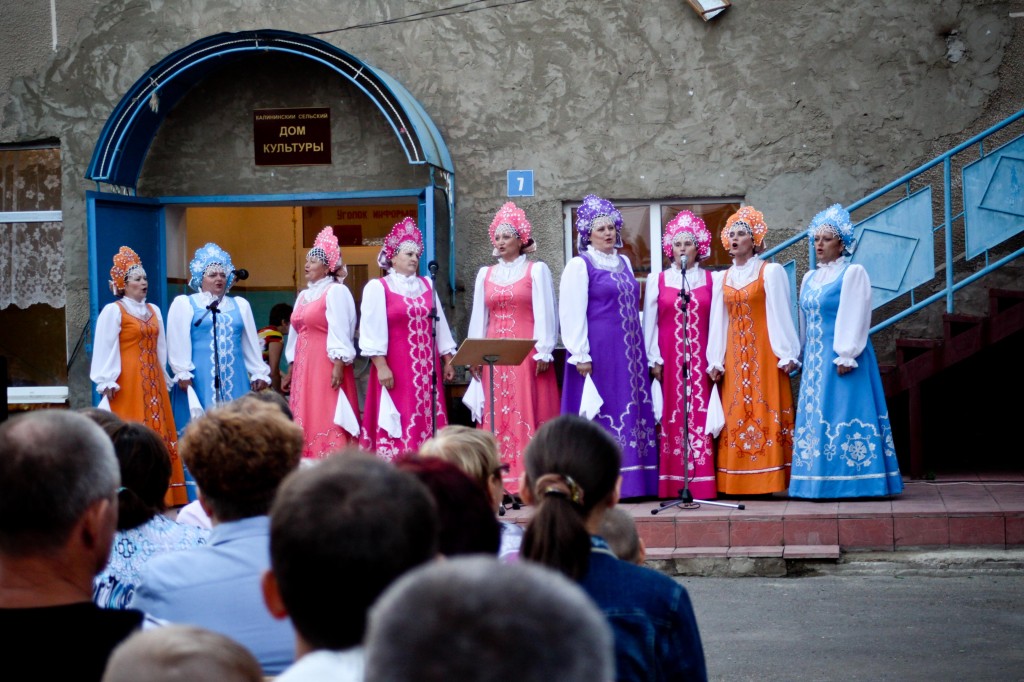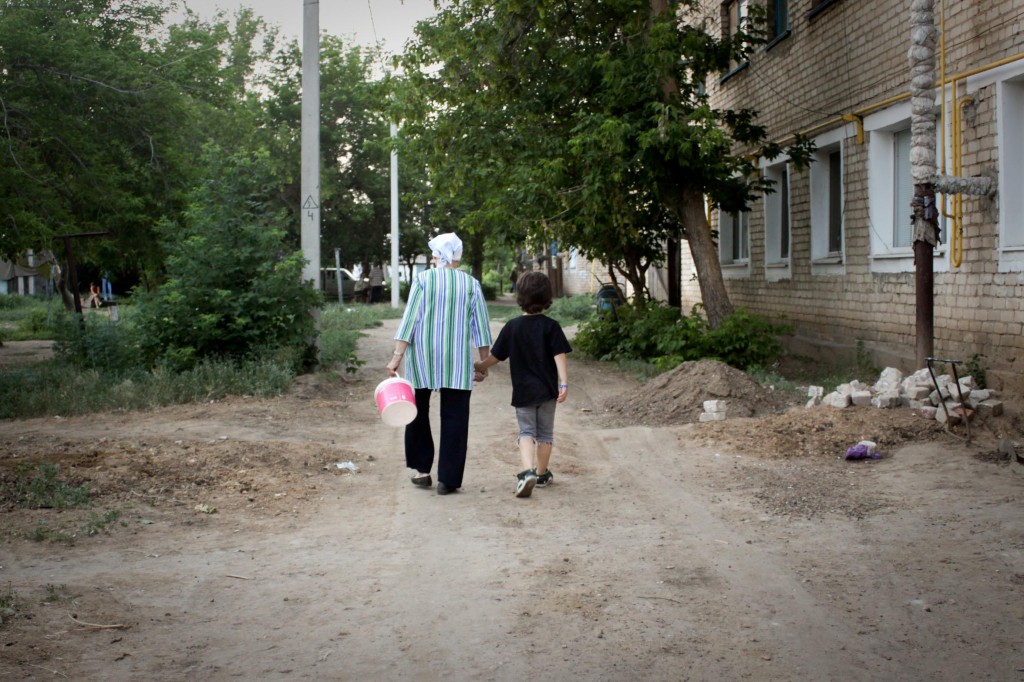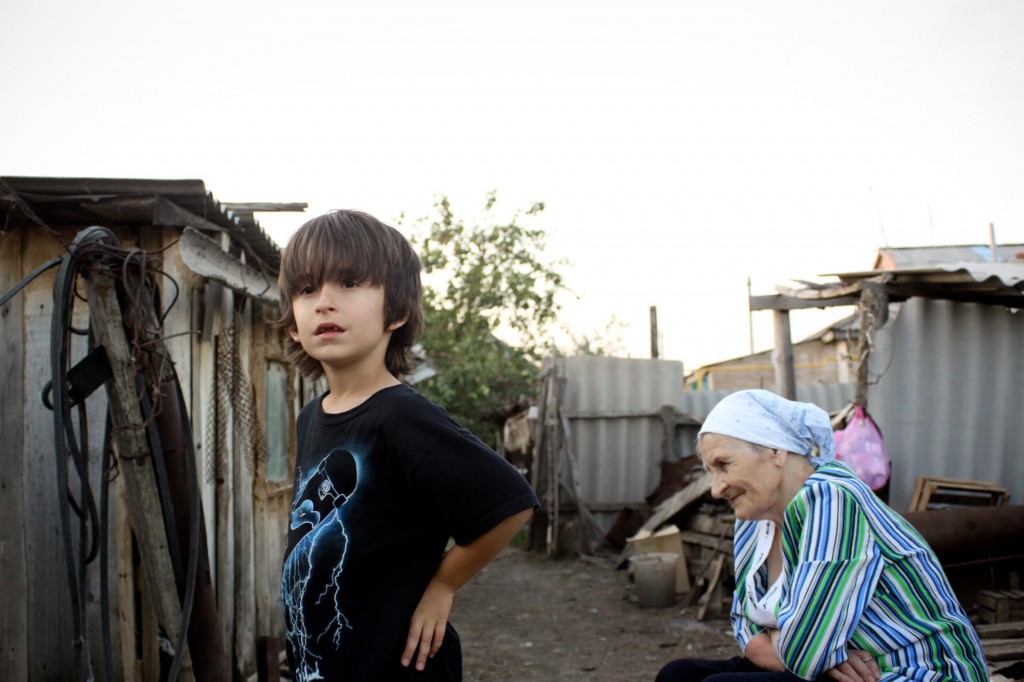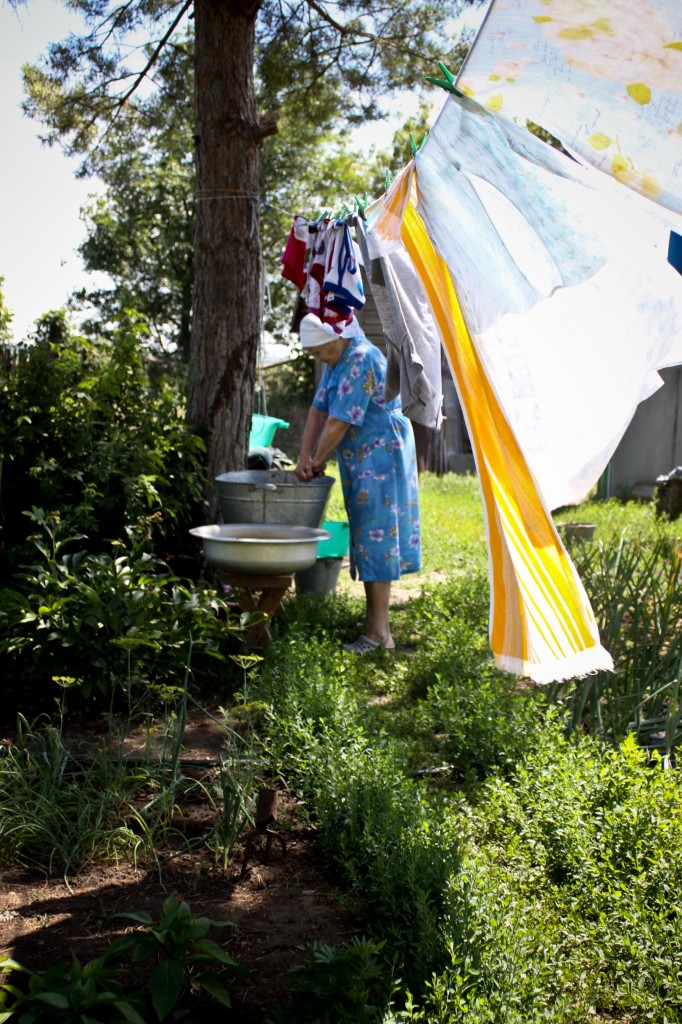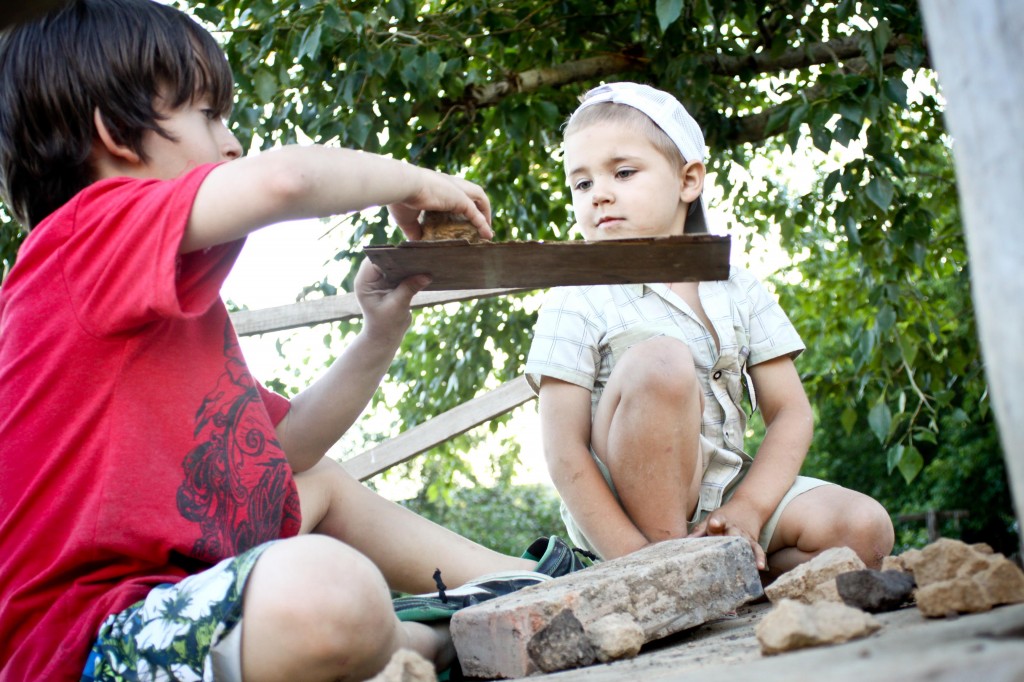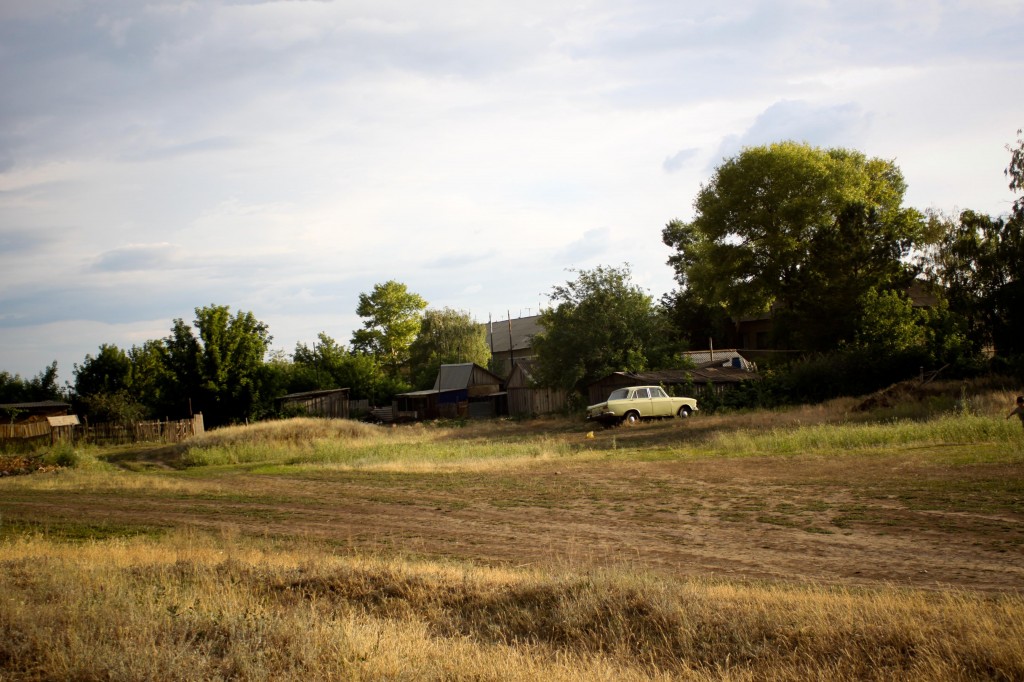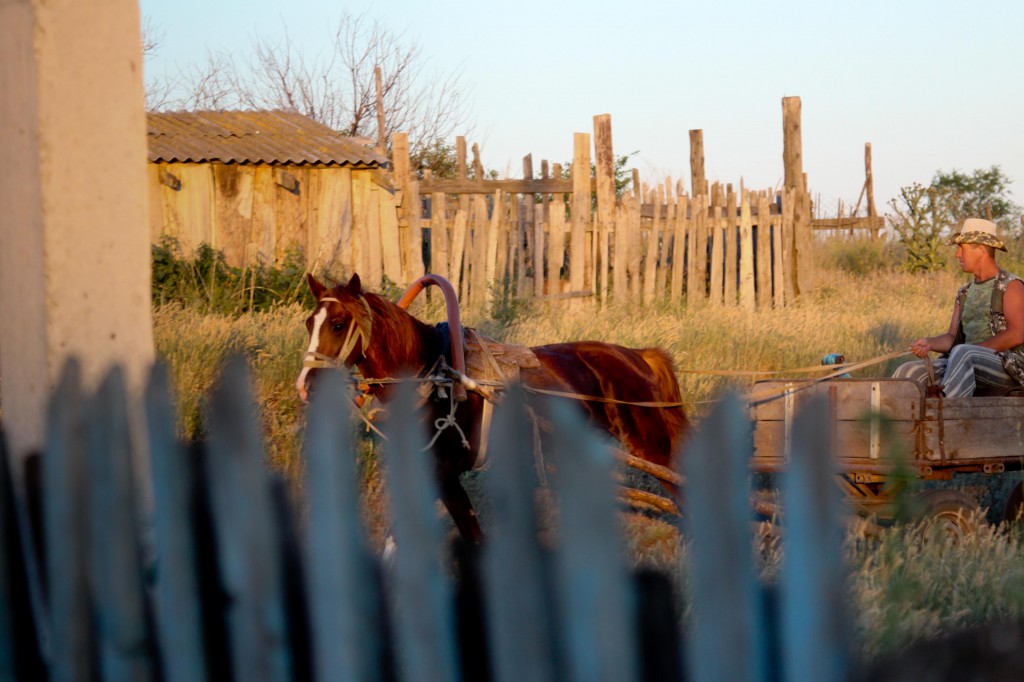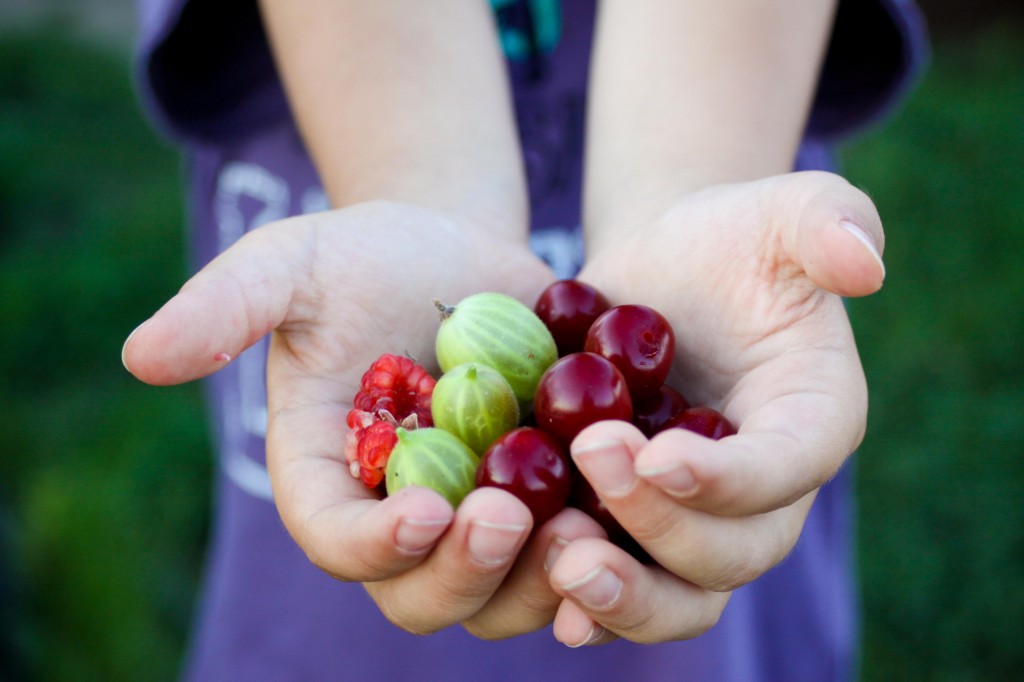1. Country, village or countryside?
In Russian, we have different words to describe a settlement, which is not town or city: “деревня”, “село”, “поселок”, and “сельская местность”. What are the English words for this? There are three of them: a country, a village and countryside. How do they relate to each other?
First, we should clear up the difference between the words “деревня” and “село”. Often in modern language, these words are synonymous, especially in the speech of residents of cities. Before the Revolution, the main distinguishing feature of село was a church. After the Bolshevik came to power and destroyed a large number of temples, this criterion became irrelevant. Now according the tradition this word is used for naming those settlements that were called so before the Revolution.
Поселок differs from деревня and село in that way that it’s usually built near some kind of production (factory) or a large railway junction. The life of people there is more like in a city.
So, what English words will be suitable for the translations of the Russian ones? The answer is one – “a village”. But you have to remember that when you speak about some British community, it must meet certain criteria to be called “a village”. As a rule, its population ranges from several hundred to several thousand inhabitants. But there is a nuance. This term is used only in relation to that settlement where you can discover various objects of modern infrastructure: a school, shops, a church, not to mention administration. In the same case, if the infrastructure of such a settlement is actively developing, then it has every chance to turn into a full-fledged town. If there’s no any infrastructure in a settlement it is called “a hamlet”.
However, for example in America, there are no villages in the European or Russian sense. But there are people who live on farms or in trailer parks rather far from cities. What is the name for such places? Americans use the word “country”.
But in the UK it is used as an equivalent to Russian “местность за городом”. For example, the sentence “Мы на выходные едем за город” can be translated as “We are going to the country on the weekends”.
And what about the word “countryside”? Obviously, it is composed of two words: “country” and “side”. It seems good for translating Russian term “сельская местность”. This is partly true, but it is worth remembering that most often it is used when it comes to the beauty of nature, and not about human settlements.
2. Answer the questions.
1. What is the translation for Russian words “деревня”, “село” and “поселок”?
2. What are the criteria for a settlement to be called “a village” in the UK?
3. What word is used to name such places as farms or trailer parks in the USA?
4. What word can we use to say that we spend our weekend far from the city?
5. Are the words “сельская местность” and “countryside” synonyms?
3. Here are some videos and a website about typical English and Scottish villages. Divide into several groups, study the media materials and complete a comparison table about typical British and Russian villages. Be attentive: some information is not given directly – use your own knowledge or the Internet.
Link: http://moniaive.org.uk/
|
Criterion |
British village |
Russian village |
|
Location |
||
|
Population |
||
|
Objects of modern infrastructure |
||
|
Occupation |
||
|
Houses |
||
|
Streets |
||
|
Local government |
4. Read the text and do some exercises after it.
Problems of cities and countryside
Many people prefer living in cities rather than in the countryside because it is often easier to get good education and find a well-paid job. Besides, there is usually a wide choice of public transport, so you don’t need to own a car, which is necessary when you live in the countryside. What is more, there are a lot of interesting things to do and places to see. If you live in the village, you have almost nowhere to go, but if you live in the city, you can eat in good restaurants, visit museums, and go to the theatre and to concerts. All in all, city life is full of bustle and variety, and you will never feel bored.
However, some people choose to live in the countryside because living in a city is often very expensive. It is particularly difficult to find good cheap accommodation. What is more, public transport is sometimes crowded and dirty, particularly in the rush hour, and even the parks can become very crowded, especially on Sundays when it seems that every city-dweller is looking for some open space or green grass. On the contrary, the air in the countryside is very clean and there are no noisy crowds, so living in the country can be useful for your health. Last of all, despite all the crowds, it is still possible to feel very lonely in a city because people often don’t know their neighbours whereas in the countryside people know each other and you have many friends.
In my opinion, it’s possible to solve most of the problems of big cities, for example, the problem of pollution. Cutting down on emissions from large combustion plants and exhaust fumes from vehicles would help solve the problem. I think we should try to use alternative energy such as solar energy and wind energy and design plants and cars that run on electricity, a much cleaner fuel than petrol. In addition, I think the government should ban cars from city centres. We can also improve the situation with traffic if the government encourages people to use the underground more. I would argue that if the underground was made cheaper, many people would decide to leave their cars at home.
As for me, I would prefer city life because I am keen on visiting theatres, cinemas, museums and galleries and do not mind noise and pollution. Besides, my city offers me good opportunities to continue my education and I hope to find a prestigious job in the future. However, I enjoy the peace and fresh air of the countryside and in summer I usually go to my country house where I have a good time with my friends.
Answer the questions:
1. Is the city life stressful? Why?
2. How would you improve the living conditions in the place where you live?
3. Why do young people tend to live in cities?
4. Where do you think people will live in the future, in cities or in the countryside? Why?
5. Would you like to change the place where you live? Why?
Give a talk on the life in the city. Remember to discuss:
• why people prefer to live in the city
• why some people choose to live in the countryside
• whether it is possible to solve all the problems of big cities, why
• where would you prefer to live, why.
Fill the table: write pros and cons of living in the city and in the countryside.
|
Place |
Pros |
Cons |
|
City |
||
|
Village |
5. Match the places with the things you can do there. Which of them are available in the village?
|
1 |
cinema |
a |
park your car |
|
2 |
disco |
b |
eat and drink |
|
3 |
post office |
c |
change money |
|
4 |
sports centre |
d |
catch a plane |
|
5 |
supermarket |
e |
dance |
|
6 |
hospital |
f |
see paintings by famous artists |
|
7 |
bank |
g |
buy stamps |
|
8 |
restaurant |
h |
watch a play |
|
9 |
car park |
i |
see a film |
|
10 |
airport |
j |
catch a train |
|
11 |
museum |
k |
watch a football match |
|
12 |
theatre |
l |
buy fruit and vegetables |
|
13 |
church |
m |
pray |
|
14 |
library |
n |
report a robbery |
|
15 |
market |
o |
buy food, drinks and home articles |
|
16 |
police station |
p |
take the underground |
|
17 |
underground station |
q |
read a book |
|
18 |
school |
r |
have lessons |
|
19 |
stadium |
s |
have a surgery |
|
20 |
rail station |
t |
swim and play sports |
6. Match the opposites. Create sentences with them.
Example: noisy – quiet. Troitsky avenue in Arkhangelsk is a very noisy place. I like visiting my grandma because she lives in a quiet little village.
noisy, clean, boring, cheap, dangerous, tourist, industrial, exciting, safe, quiet, busy, small, interesting, ugly, expensive, dirty, residential, polluted, beautiful, crowded, commercial, peaceful.
1
Русская деревня
Английское слово «village» переводится на русский язык как «деревня» или «село». В чем разница? До революции 1917 года село чётко отличалось от деревни: в селе обязательно была церковь, которая была центром прихода, объединяющего несколько близлежащих деревень.
Село было больше деревни, в нем обычно находилась мельница или лесопилка.
В советское и настоящее время реальных отличий села от деревни не существует.
The English word “village” could be translated into Russian in two variants – “selo” and “derevnia”. What is the difference? Before the October revolution in 1917, selo and derevnia had a clear distinction – a selo had its own church, which was joined the parish from the neighbouring “derevnia”-s. A selo was always bigger than a derevnia, it also had a windmill or a sawmill. In the Soviet times and even today, there is no longer any real difference between selo and derevnia.
В старину села обычно располагали вдоль рек и озер. В типичном русском селе должны были быть церковь, мельница (кузница, лесопилка или др. рабочие мастерские), крестьянские дома (раньше — чаще деревянные, сейчас – больше каменные), школа, баня (или несколько бань), Сельсовет (административное здание), различные сараи-хранилища. Сельсовет, как правило, располагался в центре села, в самом большом и красивом здании. Рабочие мастерские всего группировались на краю села. Баню строили близко к сельскому водоему (речке, озеру, подземному источнику). Сельское кладбище обычно располагалось недалеко от церкви. Земля делилась на узкие наделы (полосы), и каждый селянин имел несколько таких наделов в своем пользовании.
In the past, the villages were built in rows along the bank of a lake or river. The typical Russian village should have a church, windmill (as well as asawmill, a blacksmith and other crafts workshops), peasant households (previously, they mostly were wooden, but today they are built of stone). Selsovet (an administrative house), and different storage sheds. Selsovet was the most beautiful and big house in the middle of village. Craft workshops were often grouped at the edge of the village. A bathhouse (Bania, or Russian sauna) could be built in a cluster near the local water supply. The –churchyard village – Russian pogost- was originally a country church with its related structures. The farmland was divided into narrow strips, and each peasant household had several strips spread among the village’s land holdings.
Я расскажу об обустройстве крестьянского дома- избы- в досоветские времена. Состав и наименования ее помещений не менялся с 11 — 12 веков. В советское время крестьянские дома претерпели некоторые изменения, хотя название внутренних помещений сохранилось до сих пор.
I would like to tell you about the structure of a peasant house — isba- in the pre-soviet time. The structure and the name of the household parts haven’t changed since the 11-12 centuries. However, during the Soviet time the peasant houses underwent a change, though some of the names are still in use.
Крестьянские дома строились из бревен и не были слишком сложные по своей планировке. Однако у каждого из них были свои архитектурно-декоративные особенности. Крестьяне использовали в строительстве в основном дерево, металл был дорог и редко шел даже на гвозди. Все составляющие части дома вырубались и обрабатывались плотницким топором. Пилу использовали нечасто.
The houses were constructed of logs and were not very variable in layout, but they did have special architectural features that could be embellished. Wood was the most common building material. Metal was valuable and seldom used in nails for buildings. All the parts of the building were cut and joined using a hand axe. Saws were rarely used.
Русская изба, как правило, состояла из одного большого жилого «покоя» или помещения. Между крыльцом и этой жилой частью находились сени — небольшое помещение, предохранявшее избу от холода. За сенями часто строили просто «клеть» — бревенчатый чулан или кладовую, в которой хранились хозяйственные принадлежности.
As a rule, the Russian peasant house –izba- includes a big inhabited room. A small place- seni — which divides the porch and the inhabited part of the house and preserves the izba from the cold. The other small room – klet’, or chulan (kind of the larder, storeroom) — was built near the seni, to the side of the main room. The term klet’ at first just meant a building with four walls, and then designated the very simplest wood structures. Here the peasants kept some household equipment.
крыльцо
сени
клеть
Главным украшением и самой важной частью крестьянского дома была печь.Она располагалась в правом углу. Печь была душою дома — она и кормила, и согревала. Русская пословица говорит: «Без печи нет избы». Само слово «изба» произошло от древнего «истба», «истопка». Изначально избой называлась отапливаемая часть дома.
The main embellishment and the most important part of a peasant’s house was a large pech’ – stove, which located in the furthest right corner. Pech’ was considered the soul of the house (not literally)- it fed and warmed the peasants. Russian proverb says, “There is no such house without a stove”. The word “izba” derives from the ancient “istba”, “istopka” – to heat up. This comes to refer to a house with a reception area or to a building in general, while an “izba” was a house heated with a clay or tile oven.
Рядом с печью находился «бабий кут»- женский угол. Все здесь было приспособлено для приготовления пищи. У печи стояла кочерга, ухват, помело, деревянная лопата, ступа с пестом и ручная мельница. В бабьем кугу на полках вдоль стен располагалась нехитрая крестьянская посуда: горшки, ковши, чашки. Рядом с печью обязательно висели полотенце и рукомойник – глиняный кувшин. Под ним стояла деревянная лохань для грязной воды, миски, ложки.
The adjacent area – the “women’s corner” — was near the stove. It contained everything for cooking. There was the poker, oven fork, broom, wooden rabbler, mortar with a pestle, and the hand mill. The water barrel, table for food preparation, and storage cupboards for dishes and cooking supplies situated in this place.
Почетное место в избе – «красный угол» – находилось по диагонали от печи, в части, называемой горницей, или светлицей. Здесь на специальной полке стояли иконы, украшенные рушниками, хранились богословские книги, горела лампада. Всякий гость, входивший в избу, у порога первым делом находил глазами красный угол, снимал шапку,крестился и низко кланялся образам, а уж потом только здоровался с хозяевами. В красный угол сажали самых дорогих гостей, а во время свадьбы – молодых.
The most honourable place of the home was the“krasnyi ugol” (beautiful corner), which is located diagonally across from the stove in the part of the house called “gornitsa, or svetlitsa” (front room). It had at least one icon, embroidered linens and usually a small shelf with some religious books and icon lamp or candles . Anyone entering the izba would bow to the icons before greeting the hosts or speaking. Guests of honor were seated in the icon corner, and matchmaking rituals and parts of the marrital vows took place there.
В горнице находился обеденный стол, который считался главным предметом мебели в избе. Он стоял в красном углу. Каждый день в определенный час за столом собиралась обедать вся крестьянская, семья. Стол был такого размера, чтобы каждому хватило места. Вдоль стен стояли широкие лавки. На них и сидели, и спали.
The large table was a main piece of furniture that was located in the “gornitsa”. The whole peasant family gathered together for dinner at a certain time every day. Low benches – “lavki” — were built along the walls and used for seating and sleeping.
Шкафов в избе не было. Одежду крестьяне хранили в сундуках. Чем больше достаток в семье, тем и сундуков в избе больше. Изготавливали их из дерева, обивали для прочности железными полосами. Если в крестьянской семье росла девочка, то с малых лет в отдельном сундуке ей собирали приданое. Вместе с этим сундуком она и переезжала после свадьбы в дом мужа.
Russian peasants didn’t have a wardrobe or closet. They kept their clothes in wooden chests. The richer the family was, the more chests and trunks it had. These trunks were made from wood and iron-clad. If a peasant family grew up a girl, the family collected her dowry from an early age into a special chest. The girl took this trunk with her after the marriage and would move to her husband’s house.
Отдельно от дома обычно ставили свою баню. Зимой после бани крестьяне прыгали в снег, а летом в озеро. А после пили травяной чай с медом или вареньем. Возле дома находились также колодец и амбар. Амбар строили поодаль от жилья, чтобы в случае пожара в избе сохранить годовой запас зерна.
“Bania” (Russian sauna) was a seperate little room-area, which was a small distance from the house. In the winter, peasants jumped into the snow or dipped into a pond in summer after they went to the “banya”. This helped them build up resistance to the cold. Then they enjoyed herbal tea with honey or home made jam. Russians also often built a draw well and a barn near a house. A barn would be located at some distance of a dwelling with a purpose to preserve the year’s reserve of grain in the case of fire.
В крестьянских домах чердак встречался редко, но, если и был, то в нем хранили муку, сухие травы, перья птицы. В подполе, или подвале, хранили запасы мяса, колбас, гороха, картошки, яблок, меда, варенья, соленья – грибы, капусту.
In the peasants’ houses the attic was rare, but if it was there, the flour, dry grass, herbals, or feathers would be held there. The peasants had a stock of food — meat, sausages, bins, potatoes, apples, honey, home made jam, salted food – pickles and sauerkraut.
Нужно сказать несколько слов о русском деревянном зодчестве, уникальные экземпляры которого можно встретить в любом русском селе в любой точке России и сейчас.
It’s important to mention about Russian wooden architecture, which you can see in any Russian village even today.
Многие крестьянские дома имеют свои архитектурно-декоративные особенности, такие как конек на крыше, фронтоны, вертикальные «полотенца» в каждом углу, наличники дверные и оконные («светелочные наличники»). В зодчестве крестьяне использовали много магических и мифических мотивов, декоративные фигуры и силуэты животных и растений. Крышу дома обычно венчал конек — деревянное изображение головы лошади, считавшийся символом солнца и счастья, а окна украшали резные наличники.
Many Russian peasants’ houses have some architectural embellished features, such as the ridgepole of the roof, the gable ends (or pediments), the vertical boards at each corner («towels»), and the frames of windows and doors (“svetelochnii nalichnik”). Peasants used a lot of decorative plants and animal forms, mythic and magical creatures and motifs. The house was to be crowned with the traditional figure of a horse, which was a symbol of sun and happiness, and the windows were decorated with fretwork – carved pediments.
Структура крестьянского дома напоминала человеческое тело. Основанием его был простой остов (скелет) из бревен. Его фасад напоминал лицо человека и архитектурные детали можно было бы сравнить с чертами лица: окна – глаза, фронтон – лоб.
The structure of the peasant house reflects the human body. Its base was a simple frame of logs. Its facade was linked to the human face and architectural details to the features of the face. Windows were its eyes; the pediment was its forehead.
А это современные крестьянские избы:
These are the modern peasant houses:
A Typical Russian Village (celebration)
After going through the pictures from my last trip to Russia, I decided to put together a post about rural Russia. What is life like on the outskirts of Russia? What does a typical Russian village look like and what do people do there? If you want to find out, read on!
As an example, I am going to use a village that is very special to me: this is where my mother was born and grew up, where my grandmother lives, and where I used to go to spend my summers. Despite the fact that I am a city girl, I used to think that this was the best place on earth, the place I always looked forward to visiting. This place has a special meaning because of the people and events I associate it with. I would never want to live in this village but I am happy to have all the sweet memories of childhood and early youth that go back there and I wouldn’t have it any other way. OK, enough nostalgia, let’s move on to the specifics :-).
You might wonder what the cows are doing in the first image of this post. Let me explain. The event captured in the photo is Village Day, a massive yearly celebration, sort of like a street fair, with a cookout, kid’s attractions (pictured), beer and a concert at the local cultural center. The cows are on their way home from the pasture. Most villagers own cows and other animals. All the cows of the village make up the village herd. During the warm months, the cows are pastured 100% of the time. That means every morning, around 5 am all the villagers let out their cows from their stalls, the cows are gathered up by the cowboy and led out to the pastures until 9 pm. In the evening the heard is brought back to the village and the cows are met and led back to their stalls by the owner, the heard parades through the village every single day, so the cows in the image are just cows on their way back home :-).
During the cold months, the cows stay in the stalls and eat hay. In other words, all the cows in Russian villages are “grass fed beef,” not too bad, the way I see it. The pigs, which are also very common, are usually fed table scraps (помои): any and all food leftovers and byproducts such as potato peels, stale bread, egg shells, watermelon rind, etc.
The animals are kept in a structure called сарай — a building that is not too easy on the eyes, with several rooms to accommodate different animals. Children usually have to help parents with chores and animal upkeep from an early age. If you live in your own house, сарай is usually adjacent to it, however, if you live in an apartment building or your yard is not big enough, you can have a сарай on the outskirts of the village; usually they form big сарай cluster. This is what a typical сарай looks like.
Russian сарай
Below are 3 dwelling images: an average stand alone house (wooden exteriors are, perhaps, even more popular than the one pictured); an apartment building (these particular ones were built in the 50s, without running water or sewer communications, so you have to have an outhouse in your back yard or share one with the building 🙁 ); and a local businessman’s house – the best house in this village 🙂
Stand Alone House in a Russian Village
Apartment Building from the 50s in a Russian Village
Businessman’s House in a Russian Village
Daily life of a typical villager is pretty hard and monotonous. The jobs are scarce and the pay is pretty low. This is the main reason why a lot of young people move out to the nearest cities. The ones who don’t frequently resort to alcohol.
On the inside, absence of running water is still very common. However, the situation in a lot of villages has taken a turn for the better. With the small businesses slowly growing across the country, adding a personal well and sewer is certainly an option. Many villagers did just that in my grandma’s village in the last 5 years. Below is a picture of a typical washroom or санузел, a room where you can wash your face, dishes, and do any other cleaning activities.
Russian Санузел
Most of the cooking is still done from scratch. A lot of the villagers rely on their livestock for food: meat from their cows, pigs, chickens or ducks; milk, cottage cheese, and cream from the cows. Agriculture is also a very important part of their life. Absolute majority have a yard, some have several plots of land, where they grow their vegetables and fruit. A lot of people have cellars (an underground hole with a door, погреб in Russian); that is where all of your winter provisions, such as potatoes, jams and pickled goods, are stored. Depending on the size of the village, there is usually at least one or two stores. This is where you can always buy all your food, if you need to. You also have the option to purchase stuff from other villagers, which is what a lot of people still do. Villages that are big enough have some sort of an art/culture facility/club, typically it is called дом культуры. This the place where all cultural events and celebrations take place.
Russian Village, Дом Культуры
My grandmother, who is currently 86 years old, still does most of the things herself. There is a social worker who comes in once a week to do any chores that need to be done but my grandmother is not satisfied with the quality of her work, so she lets her pick up whatever groceries and refill her water buckets (you have to get water outside at the pump) but chooses to do the laundry and cooking herself.
She also still maintains a little garden every summer, even though for the last 10 years she’s been saying that she is too old for that. In her defense, she is a workaholic and it does not mean that all Russian villagers are like that (but a lot of them are :-)). When asked if she would like to move to the city and live with one of her children, she says she likes to visit but she loves the village and there is no place she would rather be. I guess there is no place like home, even if your home is in a remote Russian village :-).
Russian Village, Coming Home (From a Girlfriend’s House)
Russian Village, in the Kitchen
Russian Village, Waiting for Fresh Milk Near Сарай
Russian Village, Laundry Day
Russian Village, Best Game Ever: Flinging Rocks
Russian Village
Russian Village, Villager
Russian Village, Typical Berries: Raspberry, Cherry (Sour), Gooseberry
Test.
Topic: City and village.
Task
1. Reading. You are going to read a text about a town in Siberia, Russia. Read
the text, and choose the words from the list below. There are five words which
you do not need to use. Use each word only once. Change the form of the word
where necessary.
Akademgorodok
was (1) ___________ in 1957. It is officially called the Siberian Branch of the
Russian Academy of Science. This academic community is situated about thirty
kilometers from the (2) ________ center, but it is considered to be part of
Novosibirsk. It is well planned, the architects even received (3) _________
state award for their work. When you come into the town, first you see what’s
called the Builders District. It was decided that the very first blocks of (4)
________ should be given to those who built the town, and it was a good (5)
_________. Then you go on along several streets where most of the research
institutes are (6) _______. At the beginning of Morskoy Prospect, which is the
(7) _______ street in town, you see the Presidium building. The people who live
in Akademgorodok have a (8) _________ of imagination, and they loved building
this new town. They gave all the streets and places unusual and colorful names.
‘Morskoy’ means ‘Sea’, the street goes all across town straight to the beach
and (9) _________ Ob Sea, an artificial water reservoir. There are exotic names
like The Golden Valley Street, which got its name (10) _________ autumn, or
Pearly Street, which branches off Morskoy Prospect. Novosibirsk State
University (11) ________ also located in Akademgorodok. There are several
museums, an English-speaking school, the House of Scientists, where various
meetings and conferences are held, and the Botanical Garden. When building this
town, the architects counted (12) _______ single tree and tried to preserve as
much of the natural environment (13) ________ possible. For example, the
English school, (14) ________ occupies 1,500 square meters, was built on a
clearing in the woods. Not a single tree was cut down, and all the trees that
now stand around the school grounds are the original forest plants. Most
visitors are charmed by the town’s originality of design and (15) ________
unique natural environment.
Words:
find,
decide, city, at, the, flat, which, many, situation, that, a, its, in, their,
every, main, as, lots, be, found (5 of them you shouldn’t use)
Task
2. Reading. Complete the sentences using the phrases from the box.
Nearly
all Russian cities and towns have a lot of historic architectural monuments,
such as 1) ________. They are valuable symbols of old Russian culture and catch
the eye with such particular details as 2) ________. Some of them have become
ruined by time and really have to be 3) ________. But local authorities usually
4) _________ and it 5) ________ the possibilities for developing the town. The
situation could be saved by making a city or a town 6) _________ as tourism
provide good profits for 7) ________, especially 
people are on holiday. Though for the development of 9) ________ facilities
such as good hotels, souvenir shops, coaches, well-trained guides and other
things are needed, it is worth doing because it will make a city 10)
__________. The present state of many of our cities and towns may only 11)
_________.
Use
these phrases:
a) a
tourist destination
b) at
the height of the tourist season
c) churches,
monasteries, convents
d) lack
funds
e) prosper
and flourish
f) renovated
g) scare
tourists off
h) spires
and onion domes
i) local
residents
j) restricts
k) sustainable
tourism
Blank
for the test.
Topic:
City and village
Group
number: ____________
Surname,
name ____________________________________
Write
new words and their equivalents in Russian if you need.
1.
________________________________________________________________
2.
________________________________________________________________
3.
________________________________________________________________
4.
________________________________________________________________
5.
________________________________________________________________
6.
________________________________________________________________
7.
________________________________________________________________
8.
________________________________________________________________
9.
________________________________________________________________
10. _______________________________________________________________
11.
_______________________________________________________________
12.
_______________________________________________________________
13.
_______________________________________________________________
14.
_______________________________________________________________
Task
1.
|
1. |
6. |
11. |
|||
|
2. |
7. |
12. |
|||
|
3. |
8. |
13. |
|||
|
4. |
9. |
14. |
|||
|
5. |
10. |
15. |
Task
2.
|
1. |
2. |
3. |
4. |
5. |
6. |
7. |
8. |
9. |
10. |
11. |
Key
Task
1.
1
– founded;
2
– city;
3
– a;
4
– flats;
5
– decision;
6
– situated;
7
– main;
8
– lot;
9
– the;
10
– in;
11
– is;
12
– every;
13
– as;
14
– which;
15
– its
Words
you do not need to use:
find;
many;
their;
that;
at
Task
2.
|
1 |
2 |
3 |
4 |
5 |
6 |
7 |
8 |
9 |
10 |
11 |
|
c |
h |
f |
d |
j |
a |
i |
b |
k |
e |
g |
There is a great difference between Moscow, St. Petersburg, and all other Russia… The concept of this tour is to show you the real Russia with numerous small towns, pristine nature, abandoned churches and the life of people.
This tour does not include Golden Ring towns! Instead, you will see Staritsa town and Novgorod the Great, beautiful places to visit in Russia!
We will also visit an elderly couple living in a traditional Russia village. We will help them with their daily work — plowing the land (not by tractors, but by horses), caring for the livestock and cooking food in a traditional Russian oven… And surely we will taste some real fresh milk and eggs while they will be telling us about their common life, their habits, and the households.
The itinerary is perfect for those who are going to St. Petersburg. It takes only 4 hours to get there from Novgorod by a cheap local train.








